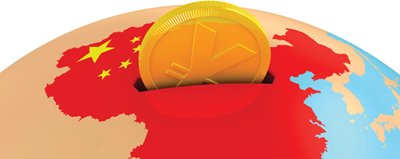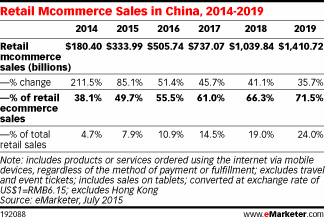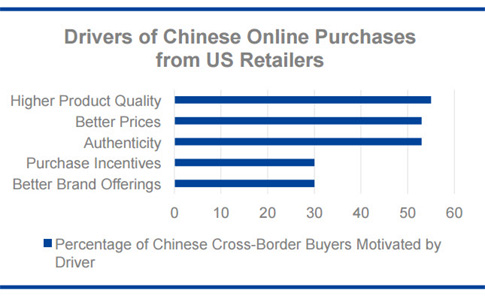Everyone’s talking about China. Something about messing with its currency, erratic stock markets, Donald Trump’s statements, etc, but we only care about the ecommerce, right? While the global market plays Roller Coaster Tycoon, ecommerce seems to be playing Chutes & Ladders… but without the chutes. Research suggests significant opportunities out there to reach an international audience for delicious growth. And it’s not only independent market research, there are ecommerce companies advocating for merchants to focus on a global market, especially China. So let’s see how they’re trying to get you global.
Persuasion Through Performance
eBay, the marketplace giant, is just one of many ecommerce related businesses pushing for merchants to go global. After launching their Global Shipping Program more than a year ago, eBay clearly began encouraging a international scope for their sellers, but they’re using their own research to persuade as well. They claim that between 2010 and 2014, sellers focused on a domestic market witnessed a sales increase of 58%, while those with at least half of their sales arriving through international buyers swam around in a 91% growth during the same period.
That’s a huge difference in performance. If we’re giving grades here, that’s an F versus an A, but, obviously, the biggest difference between domestic and international sellers was that “more than half of sales coming from international buyers” part. To any ecommerce entrepreneur, a nearly 100% increase in sales over a four year period looks enticing, but the first question is how to even begin selling at a global level. According to both eBay and Alibaba, mobile is the answer.
Mobile Motivation
Chinese ecommerce king Alibaba, which launched its IPO nearly a year ago, reported that nearly 50% of its revenue in China came through mobile devices at the end of June. Most of its mobile success came through use of its apps. While many ecommerce merchants don’t build apps for their stores and tend to prefer mobile sites, it goes to show that Chinese consumers are definitely purchasing at a mobile level by investing more time into an app as opposed to an immediately accessible website.
And Alibaba’s mobile statements are reflected by research on Chinese ecommerce sales through eMarketer. According to the market research firm, ecommerce sales via tablet, smartphone, and other mobile devices in China accounted for 49.7% of total online retail sales. And they’re predicting that mobile will make up 71.5% of total ecommerce sales by 2019.
It’s important to emphasize that this research is based in China, not the United States. Although digital buying (and digital behavior in general) is far more common in the Asia-Pacific area, eMarketer expects United States ecommerce sales to increasingly come from mobile devices, with 22% of online retail purchases coming via mobile in 2015.
Does it Pay to Buy and Sell Globally?
If you still refuse to consider selling in a global market, maybe some money people can change your mind. Online payment processing company PayPal is doing its best to get you into China, offering free overseas returns just in case the number one nation of America doesn’t quite have number one quality products. But that’s not all – to get ecommerce merchants over their fears of high cross-border shipping costs, they’ve also got some data for further seduction.
According to survey data collected by PayPal and Nielsen’s Harris Poll, much of the reason why Chinese consumers are buying from the United States is because they believe that American goods have a higher quality, a better price point, and are more authentic. The bulk of respondents purchased apparel, consumer electronics, as well as cosmetic / beauty products, and the average order value of each was $485, $1229, $512 respectively. Those are some pretty large order values, even from the largest country in the world.
APAC’s Growth Track
But it would be rude to focus completely on China – there’s more to global ecommerce than just one country. It’s really the Asia Pacific market (APAC) that’s flourishing as a whole, and, according to more research by eMarketer, it will be the chief reason for global success in the coming years with an expected 25% year-over-year rise in global ecommerce sales. A combination of population, greater willingness to purchase digitally, and growing economies are helping to fuel the region’s own 35.2% year-over-year increase in ecommerce sales.
Needless to say, it’s an area worth looking into. Long story short and without all the numbers, consider selling on a global level if you want a boost in sales. And if you’re wondering how best to begin going in that direction, start with providing a seamless mobile experience. Expanding global isn’t as huge of a deal as it sounds; this isn’t some brick & mortar business opening an office in Shanghai. All you need is a functional mobile site, some solid quality products, and the courage (or money) to ship abroad.





